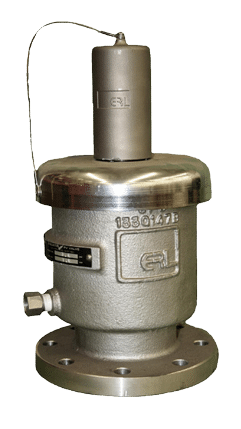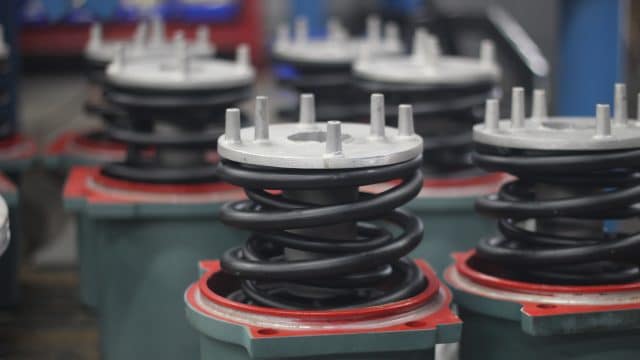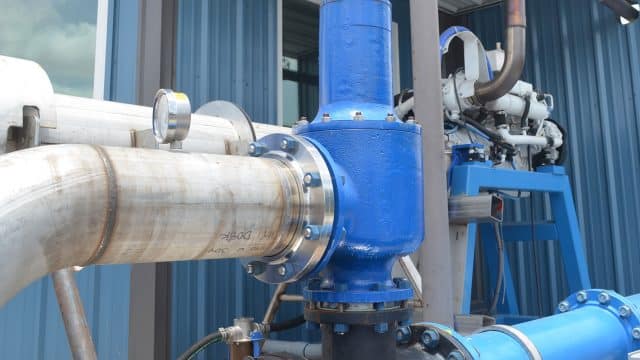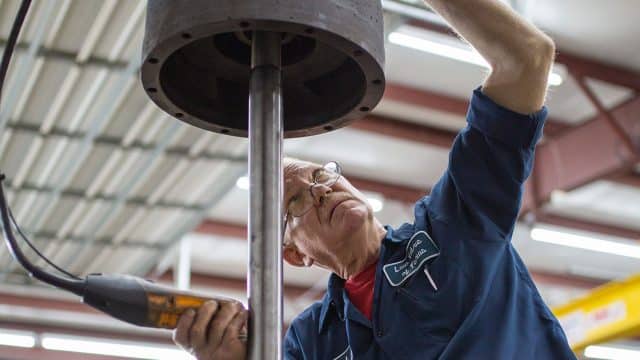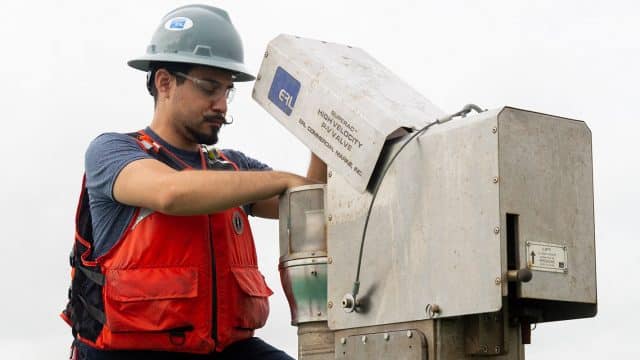Do you need a hand wrapping your head around pressure valves?
Well, look no further! In this guide, we’ll be covering everything you need to know about pressure vacuum relief valves. We’ll explain how they work, why they are necessary, and the best valves for different applications.
So, let’s get started!
What Is a Vacuum Relief Valve?
A pressure vacuum valve is a type of relief valve. Relief valves are safety mechanisms that control or limit a pressure system.
Without this mechanism, pressure can build in the system, causing the equipment failure or damage, and in the worst case, an explosion!
Relief valves have a wide range of uses. Pressure levels are crucial to smooth transportation of volatile chemicals, liquids, or gasses. You can operate them manually, such as with pilot-operated pressure relief valves.
When the pressure reaches a certain level on the gauge, an operator can open the valve by hand with a crank or wheel.
Alternatively, a system can be programmed to respond to pressure automatically. These are known as direct-operated pressure relief valves. They usually use a spring mechanism to open and shut depending on preset pressure levels.
Pressure vacuum relief valves operate on a similar principle. They are mounted on a nozzle. The nozzle opening allows a small volume of vapor, air, or gas out of a tank.
Tank pressure naturally changes during operation because of heat or mixing. These valves allow the tank to ‘breath.’ In other words, vent or inhale air to ensure the correct pressure level to protect the tank.
How It Works
Many valves work on a weighted or spring loading mechanism. The valve is typically placed on top of a fixed roof atmospheric storage tank. It will have an opening on the top to control pressure and vacuum.
If we think of pressure as the force exerted in the tank, creating a vacuum is the expulsion or at least partial expulsion of pressure. When this happens, air, gas, and liquid are drawn into the space created by the vacuum.
Pressure vacuum relief vents are designed to prevent the tank from rupturing when pressure builds in a roof atmospheric storage tank. When a liquid comes under high pressure, as molecules start to excite.
As a result, the temperature increases, and the fluid can turn to vapor. This vapor space pressure can put the tank under strain. To release the pressure, we can use a vacuum condition to draw the excess pressure out.
Here’s a basic overview of how the valve functions, in this diagram, we have a simplified spring-loaded pressure vacuum valve .
Parts:
Spring: The spring is what controls the flow of pressure. It is what keeps the seat disk in place.
Seat Disk: The seat disk is like a plug, blocking the pressure-flow up to a certain level.
Set Pressure adjusting screw: This determines the relief pressure needed to compress the spring.
Operation:
The operation is as follows:
- Pressure flows into the valve.
- The valve reaches the pressure level set by the adjusting screw or preset spring.
- The spring will start to compress.
- This lifts the seat disk. This creates a vacuum.
- Pressure can be discharged out of the valve.
Now we have a basic understanding of how a pressure vacuum valve works, let’s move on to why they’re used.
Why Are Relief Valves Used?
In essence, vacuum relief valves are protection devices. Their primary purpose is to protect and ensure the safety of your crew members by:
- Preventing tank and equipment damage – by too much pressure or excessive vacuum. This can help to save money on equipment maintenance.
- Reducing evaporation emissions when liquid fuel becomes vapor due to heat and pressure.
- Reducing atmospheric corrosion of tanks – the deterioration of the tank caused by liquids and gasses in the atmosphere.
Relief valves are also required for API compliance – the set of guidelines for storage tanks laid out by the API (American Petroleum Institute).
OSHA (Occupational safety and health administration) and the EPA (Environmental protection agency) also regulate the transportation of harmful or chemical tanks.
With these benefits and requirements, the next thing you need to know is how to choose the suitable valve for your tank.
Choosing a Valve
Not all tanks will need a pressure vacuum relief valve. It is usually only used in situations where high pressure is expected. When choosing a valve, you need to consider:
Design
You want a design that meets the simplest requirements to fulfill your needs. Complicated designs are more challenging to maintain. You want to ensure whichever model you choose – the valve is fully operational.
Pressure should be able to flow through unimpeded. Vapors should be emitted at high speed and fumes expelled safely.
Sealing
You don’t want excess emissions escaping when the pressure level is set. So, after each breath, the valve should seal fully to prevent any emissions from leaking out.
Size, Capacity, and Application
You need to know the discharge rate, the level of pressure you need to maintain, and the size and type of inlet you plan to use the valve.
Depending on what the tank stores, you will need to choose a valve to meet that application. Different valve materials can handle different heat levels, pressures, and corrosion.
Do You Still Have Questions About Pressure Vacuum Relief Valves?
We hope this guide on pressure vacuum relief valves has been helpful. If you need more guidance on choosing the best valves, equipment, or training, visit ERL Inc. We have an extensive range of products and equipment for tank barges. For more information, please feel free to contact us today.

